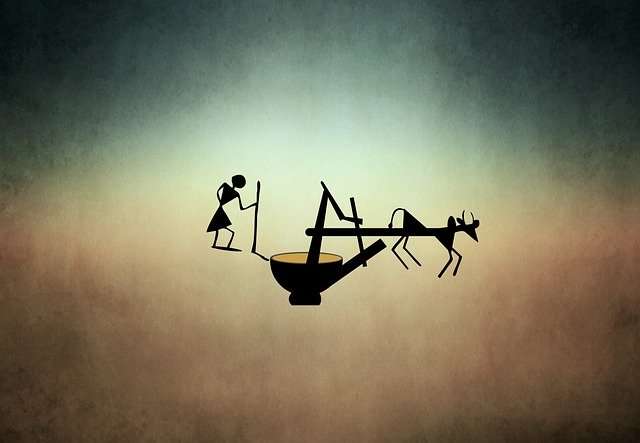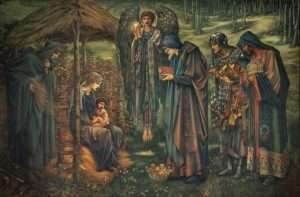The paintings of European scenery by the 17th-century Dutch masters have become the classic examples of landscape art. But it was in the 18th century that the popularity of this genre actually began to spread.
What makes a painting a landscape is subject matter, not technique. An early 20th-century painting showing a stretch of desert or a forest might be called “landscape” even though it uses an impressionist technique, while a 19th-century painting showing a city street or a portrait might not be so described, even though its style is completely realistic.
You can make landscape art without leaving your studio. Working from sketches and memory, you can paint mountains and riverscapes from imagination. This is sometimes called imaginary landscape art. It can be just as impressive as real landscape art–but probably for different reasons. And there’s no reason why you can’t combine real and imaginary elements in the same picture, if you like.
The imaginary painter has to be able to visualize the scene very accurately–enough so that the viewer’s eye will not detect any errors–while at the same time creating an image that still surprises the viewer with its unexpected effects. The real painter must make an image that seems as accurate as possible while hiding all traces of his brush
Some artists specialize in landscapes, but most of us are unlikely to find a landscape painting market unless we are already famous for something else.
In the U.S., there is some demand for landscape paintings; people put them in their homes as decorations. But this market is tiny compared to the general art market. So if you want to make money selling landscape paintings, you should also be prepared to move into other areas.
Because they are living things, gardens are always changing. Sometimes you want them to change: a garden that looks the same year after year is probably not a very good garden. Other times, though, you want to prevent change by keeping it looking nice.
For thousands of years people have been trying to figure out how to create the appearance of permanence in their work. The astonishing thing is that they succeeded.
I saw this in the context of a museum exhibit called “The Genius of China,” which was entirely about Chinese landscape art and its influence on Japanese landscaping, which also had its influence on Western landscaping.
What I found interesting about this exhibit was that the techniques used by Chinese and Japanese landscape artists were in some cases identical and in other cases very similar. The two cultures were geographically close and shared many of the same artistic conventions, but some of their techniques differed because of different cultural attitudes toward nature.
The most striking example is this karesansui garden from Kyoto:
Landscape art includes paintings, drawings, and sculpture. It can depict a particular place or a more general type of landscape.
Landscape art may be realistic or abstract. Realistic landscape art is often painted to look like a photograph. This kind of landscape art is called “realistic” to distinguish it from abstract paintings that don’t look like photographs of real places.
Abstract landscape art is based on the principles of design and color theory. Like other works of fine art, it is usually created by professional artists. Landscape artists may specialize in a particular style or technique.
In a landscape painting, to suggest distance, try lowering the horizon line. For depth, use atmospheric perspective. To capture a moment in time, paint quickly and loosely. To give the impression of a tranquil setting, use soft colors.
The advice is useful, but it is not helpful because it is too general. It does not address the question of why these techniques work. The book does not teach you how to paint a landscape; it teaches you how to learn how to paint landscapes.
In his “Notes on the State of Virginia,” Thomas Jefferson wrote, “A taste for the fine arts is certainly cultivated in . . . the southern provinces of America; and among the remarkable proofs may be reckoned the University of Virginia, and the cottages ornées [ornamental houses] with which its neighborhood abounds.”
The cottages were built by Thomas Jefferson’s friend Thomas Mann Randolph Jr., to attract wealthy residents to Charlottesville. The cottages were ornately decorated, with a variety of styles and forms. They were not inspired by any existing style—the builders were inventing a new one.
In 1819, Thomas Jefferson wrote of them, “Their form is that of our old farmhouses, with such improvements as are suggested by taste and knowledge of the principles of architecture. They are almost all painted white on the outside; many are ornamented with pilasters or small columns at their corners, cornices and friezes.”
Landscape art, like any other subject in the visual arts, is too broad and fluid a category to be useful. The word “landscape” refers first of all to a particular type of painting, which started out as an attempt to faithfully record actual views. It eventually gave way to a much more general style of painting from nature that emphasized open vistas and natural harmonies. Landscape art has included everything from abstracted studies of plant forms to imaginary scenes and depictions of actual places that were not painted directly from the artist’s view but were imagined or copied from photographs.
The term is also used more generally to encompass any work with a direct relationship to nature. This includes most portraits, still lifes, some figure paintings, and even sculpture. When artists made images of imaginary places, they sometimes referred to them as “landscapes,” even though there was no particular connection with actual landscape painting as such.
But it’s also used less specifically as an umbrella term for all works depicting earthbound natural subjects—flowers, trees, etc.—from a particular time or place: pastoral art, landscapes of the Hudson River School (or even American painting in general), landscapes of the American West.
All these uses are problematic because they conflate very different


